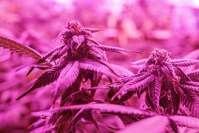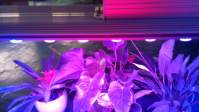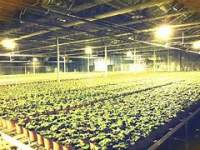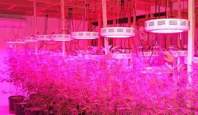How to choose led plant lights? You'll know after reading it
Plants can grow only when photosynthesis is greater than respiration. This critical point is called the light compensation point. For example, the light compensation point of tomato is 51.6μmol/s/m², and the effective radiation of photosynthesis must be greater than 51.6μmol/s/m² to be effective.
Lux is the intensity felt by the human eye. For plants, it is measured by the spectral intensity contained in the lamp that is effective for photosynthesis. This is called photosynthetic effective radiation, referred to as PAR and PPF. PPF and LUX cannot be Conversion. PPFD is the strength per unit area of PPF. Generally, a 20w T8 tube LED can only provide about 24μmol/s/m² PPFD at a height of 30cm from the plant. If it is used to grow tomatoes, then at least 3 lights are required. But tomatoes will grow upwards, but in practical applications, foreign greenhouses using 630 LED plant lights hanging in a 4-meter high greenhouse can only get PPFD at 90μmol/s/m², using 600w Agricultural sodium lamps can reach about 120μmol/s/m², and the price is about 1/5 of that of LEDs, so agricultural sodium lamps are mainly used in greenhouses. Let's talk about the light saturation point. When the PPFD reaches this point, the photosynthesis rate of the plant is the fastest, but beyond this point, it will not grow any more, and there will even be adverse effects. The light saturation point of tomato is 1998μmol/s/m². The most powerful lamp in the current application is 1000w octopus LED plant growth lamp, PPF 2100μmol/s, when it is hung in a 6-meter-high greenhouse, it will be illuminated. PPFD is around 200μmol/s/m², the summer noon sunshine PPFD is more than 2000μmol/s/m², so any artificial light source on the earth cannot replace sunlight.
When choosing plant supplement light, there are two main types of application scenarios, household and professional agricultural plant supplement light (such as plant factories, greenhouses), the latter involves a lot of optical design.
The existing plant lights on the market include fluorescent lamps, HID lights and LED lights. No matter what the purpose is, it is recommended to choose LED plant lights. This is mainly because compared with traditional plant lights, LED plant lights have the following advantages: high luminous efficiency (energy saving), wide spectrum coverage (easy to obtain monochromatic light or full spectrum), adjustable light intensity spectrum, long life, Low heat (can be illuminated at close range, saving planting space), diversified forms of lamps (which can meet the needs of different application scenarios), and high safety in use.
Take a chestnut: In the planting experiment we did, it takes 45 days for vegetables to mature in the natural environment, and they can grow into 45 days after 30 days of planting with LED plant light.
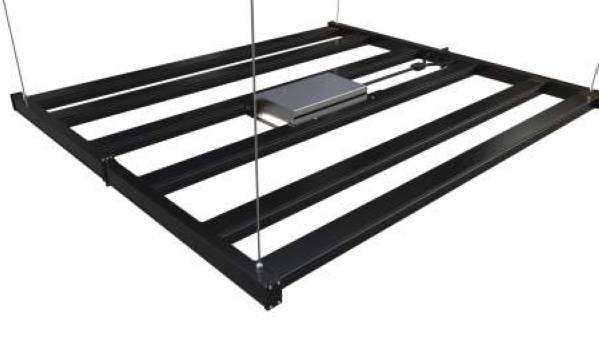
To give another example: HID lights are currently used in greenhouses, but HID lighting is not as high as LED plant lights. Although the price of HID lights is much lower, its power consumption is the largest consumption of plant lighting costs. . According to the comparison of 600WLED with 1000WHPS (HPS is a kind of HID lamp), the photons of the two lamps are about the same, but the annual electricity cost can save about 2300RMB, and a qualified LED plant lamp has a lifespan. At 50000h, the service life of the high pressure sodium lamp is only 3000h.
Before purchasing a plant supplement light lamp, you still need to understand the parameters of the lamp, including the power of the lamp (related to the supplement light effect and energy consumption cost) and spectrum (affecting the supplement light effect), style, size, lamp body material, and weight And the type of light source (related to the life of the lamp) and so on.
If you are a professional agricultural grower, it is very important to understand the planting needs before buying plant supplementary lights!
1. What plant should be supplemented with light? Because different plants have different requirements for light intensity and spectrum, this affects the choice of fill light power and spectrum customization; spectrum customization: the spectrum of artificial light sources is carefully designed according to the needs of plant growth, professional Plant supplement light will customize different spectra according to the needs of different crops at different growth stages, and the spectrum will obviously affect the supplement light effect.
2. The area and layout of the supplementary light area not only affects the choice of lamp power, but also involves the choice of lamp size and style;
3. The space environment, such as the lighting conditions and shading of the area and the height of the lamp can be hung, etc., the material of the lamp body (for example, whether it is UV resistant), the type of light source (hot or cold light source) and the choice of hanging load for reference;
4. Estimation of the cost of supplementary light, etc. The plant lighting market combines the physiological characteristics of plants with lighting fixtures. The products are different but the quality is also uneven. When considering the supplementary light effect, the safety certification of the lamps and the warranty period and after-sales service of the lamps should also be considered. Wait, the professional problem is that it needs to be handed over to professional people, who can use data to speak.
Different brands, 600wled plant lamp succulent planting experiment, turn on the light 12h/day, the duration is 30 days, the planting layer height is 30cm, a total of 10 succulent varieties.
Take "ruby" as an example. Red and blue have more spectrums, and the coloring and firming effects of crops are more obvious. There are many factors that affect the growth of plants. Ventilation conditions and heat from lamps will affect crops.
Fish tank water plant fill light test
50w water plant planting fill light, the size of the fish tank is 80*40*45cm, and the lighting time is 8h/day. The aquatic plants are mostly negative grasses, and the PPFD given to 200umol/s/㎡ is enough. Assuming that the light efficiency of this lamp is 2.0μmol/J, the PPFD theoretically can reach more than 300, which is enough for this tank of aquatic plants. of. However, the actual planting situation is not ideal. Obviously, we can see that the middle aquatic plants are growing very prosperous, and the marginal planting areas are elongated. Tested with a photon meter, the position of PPFD in the middle area of the lamp 1 is 1200μmol/s/㎡, and the position of 2 is only 21μmol/s/㎡. The uniformity of this lamp is seriously insufficient; The light intensity in the edge area increases, but there will be a lot of light hitting the outside of the fish tank, causing light waste. It can be seen the importance of light uniformity when choosing the fill light.
Photosynthetic photon flux PPF (Photosynthetic Photon Flux) refers to the number of micromoles of photons emitted by artificial light sources per second in the wavelength range of 400-700nm. The unit is called umol/s.
The photosynthetic photon flux density PPFD (Photosynthetic Photon Flux Density) refers to the number of photons per second per unit area, and the unit is called umol/s/㎡.
After adding an identical lamp to the fish tank, the growth of the whole tank of grass is much more balanced. Blue light can promote the coloring of red aquatic plants. It happens that this lamp has the function of adjusting the spectrum. I adjusted it to a spectrum with blue light, and the coloring is obvious. But the waste of light is still very serious, and the walls next to it are all illuminated.
In order to reduce the light waste, DIY two reflectors, pay attention to the use of optical-grade reflectors or reflective paper, otherwise the light leakage will be serious. After adding the reflector, the light wastage will be much better, there will be no glare at home, and the eyes will be much more comfortable.
In order to increase the light utilization rate, reflective paper was attached to the surroundings of the fish tank and tested with a photon meter. After the reflective paper was pasted, the average light intensity in the fish tank increased to about 40%. The increase in the light intensity of the reflective paper was very obvious, but it hindered daily appreciation, and the sticker was later cancelled.
For household led plant lights, not only the growth of plants must be considered, but also the ornamental nature. The color rendering of the lamp in the middle is obviously better than that of the lamp on the left. The same aquatic plant has higher color purity in the middle. If the requirements for viewing are relatively high, pay attention to the color rendering parameters when choosing lamps.
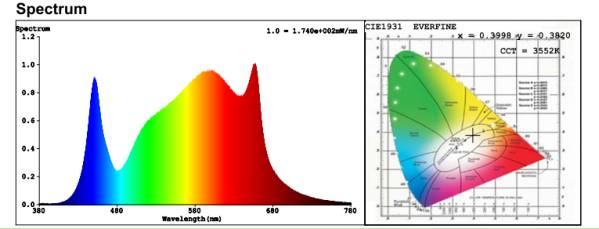
Lighting products have the following advantages and can be the first choice for rest assured when choosing plant fill lights.
1. More professional spectrum, which means better planting variety quality and shorter planting cycle, higher yield, more effective ingredient content and more energy saving;
2. High light efficiency;
3. Efficient heat dissipation;
4. Good optical uniformity, no glare;
5. High optical utilization rate;
6. Good protection performance.
Is it better to keep the fill light on or turn on/off according to the day/night?
Here is the issue of photoperiod. Photoperiod is very important to the growth of plants. It refers to the needs of different crops for light time. Adjusting the photoperiod by supplementing light will affect the vegetative growth and reproductive growth process of plants. Generally, it is recommended to turn on the lights for crops at 12-18h a day, which can speed up the growth of the crops. Give the crops a continuous rest period at night.
So how to choose fill light?
1. How to choose the type of lamp?
As far as the current development trend of supplementary light is concerned, as a new type of light source, LED plant light has the characteristics of energy saving, environmental protection, long life and short response time, and its advantages in the field of agricultural supplementary light are obvious. Compared with traditional light sources, LED plant lights can adjust the spectrum and radiation intensity according to requirements; LED plant lights are cold light sources, and close-range irradiation will not cause burns to crops. Is it possible to choose LED plant supplement light directly? The answer is not necessarily. It is necessary to consider the climate and conditions of the geographical location of the landlord. If it is in the north, where the winter is very cold, it is recommended to mix LED plant lights with high-pressure sodium lights to keep the greenhouse at a certain temperature. If you are in the warmer south, you can use LED plant lights alone.
2. The type of crop is the key influencing factor in the selection of lights
In 2017, the "Quantities and Units of Electromagnetic Radiation for Plants" issued by the American Society of Agriculture and Biological Engineering extended the spectrum that has an effect on plants to 280nm-800nm. The specifics are more complicated. In simple terms, the plant types are different. , The wavelength of light required is also different. For example, blue light can induce the accumulation of flavonoids and anthocyanins. Therefore, for tomato growers, increasing the proportion of blue light can promote the formation of lycopene and flavonoids in tomatoes and improve the quality of tomatoes.
3. The influence of photoperiod
Photoperiod refers to the perception and response of organisms to the alternating length of the light period and the dark period in the day-night cycle. To put it simply, some plants have to undergo a certain photoperiod to form flower buds. This is also the result of the adaptation of plants in different geographical locations to the climatic environment, ensuring that plants can complete spring and summer in the appropriate season. The life process of Hua, Qiushi and Dongzang.
There are still many plants that do not respond very strictly to the length of sunlight. They can also bloom after a period of time under unsuitable photoperiod conditions. Different varieties of the same plant may have different requirements for sunshine. The main way to artificially adjust the photoperiod of plants is to artificially supplement light to extend the time of light, or artificially block natural light to make plants enter the dark phase in advance. So how long it takes to irradiate depends on the types of plants planted.
The photosynthesis required for plant growth is inseparable from light, but light of different wavelengths is significantly different for plant growth. Red light and blue light can provide the most abundant nutrients for plant growth. Blue light-is conducive to the growth of plant stems and leaves. Red light-is conducive to the flowering and fruiting of plants. Different wavelengths have different effects on plant growth.
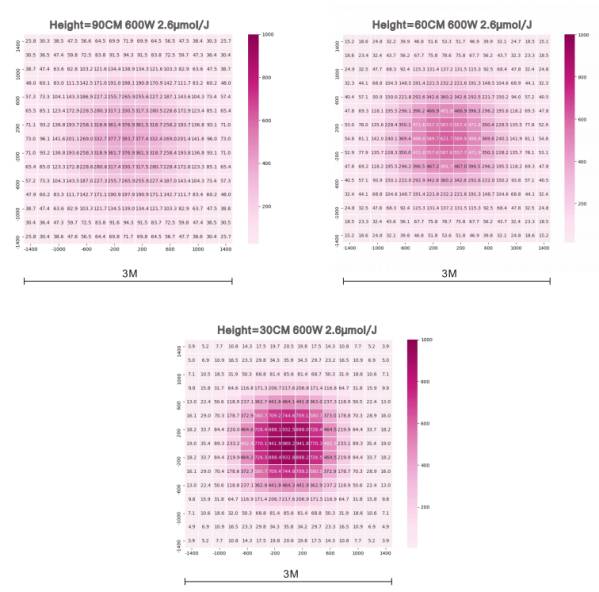
200-280nm strong ultraviolet light C-band has a serious adverse effect on plant growth.
280-315nm ultraviolet light B band, easy to cause plants to fade
315-380nm ultraviolet light A band, has no effect on plant growth
The 380-400nm visible light band begins, and the chlorophyll absorption process begins. Both UV protection lamps and plastics can effectively block light with wavelengths below 400nm.
400-520nm includes purple light, blue light and light green light. Chlorophyll strongly absorbs light in this band to promote photosynthesis. Light in this band is helpful for the growth of plant stems and leaves.
520-610nm includes green light, yellow light and orange light. Chlorophyll and other pigments such as carotenoids are poorly absorbed.
610-720nm red light band. Chlorophyll has the strongest absorption and greatly promotes photosynthesis. The light in this band is helpful for the flowering and fruiting of plants.
720-1000nm near infrared band. Chlorophyll is basically not absorbed. The light in this band has some influence on flowering and budding.
Vertical farm lighting, an artificial supplementary lighting program set up in an environment where planting area and natural light are restricted, has a strong application prospect especially in the effective use of urban environments to grow crops.
Greenhouse lighting, proper artificial lighting system plays a very important role in various modern greenhouses in horticultural production, by adjusting the light formula of different crops, optimizing crop appearance, growth cycle, nutrients and flavor substances, etc. factor.
The researched plant lighting provides tailor-made solutions for specific plant types and helps researchers explore how light affects the growth and development of plants.
Shenzhen Yaorong Technology Co., Ltd. is also at the forefront of plant lighting. Each plant species has its own special lighting needs. Through direct cooperation with growers and scientific personnel, we provide crop-based lighting formulas to integrate plants. The quality and quantity have been raised to a new level. At the same time, our global team of experts provide professional knowledge support in the fields of optics, electronics and optical sensors. From lighting products to intuitive user interfaces for intelligent control, Ye Power provides complete software solutions to optimize products and systems for plant growth.
LED plant lights are called indoor "sun", it can replace sunlight and ensure the healthy growth of plants indoors. The development of indoor agriculture has proved that, for plants, LED plant lights can even surpass sunlight. So, why can LED plant lights replace "sunlight" to regulate the growth of indoor plants? What are its advantages compared to sunlight? This still has to start from the absorption and utilization of light by plants.
Plants absorb light like this
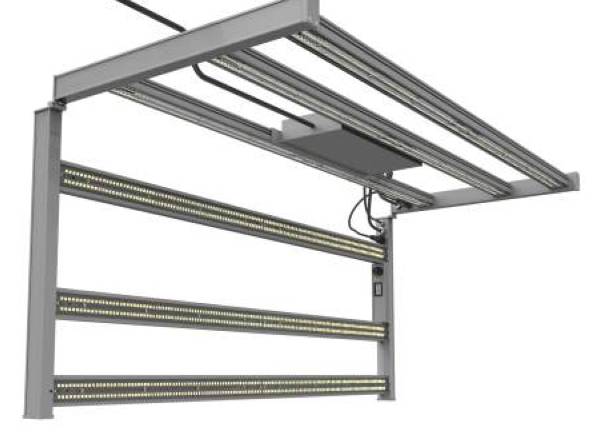
The absorption of light by plants is mainly through photosynthesis.
In this whole process, plants use their own "light-harvesting antennas" photosynthetic pigments to absorb sunlight and convert it into chemical energy for storage in the form of sugar, and then use this energy for growth.
At the same time, some of the absorbed light can be used as environmental signal factors to participate in the regulation of a series of plant growth and development behaviors, such as seed germination and morphogenesis, flowering and the synthesis of secondary metabolites.
Light plays an important role in the growth of plants.
Plants are also picky eaters of light
Solar spectrum decomposition
The plants bathed in sunlight actually only absorb a small part of the sunlight, and most of the other sunlight cannot be used by the plants.
This is because the wavelength range of sunlight covers the entire electromagnetic spectrum from X-rays to radio waves, and the photosynthetically active radiation available to plants lies in the range of visible light (400-780nm), which is what we often call red, orange, and yellow. Seven colors of green, blue, blue and purple.
Spectral analysis shows that among the seven colors of light, plants mainly absorb red and blue light for photosynthesis. Green light, yellow-orange light and far-red light and other trace light are involved in other metabolic processes of plant growth.
In addition to the composition of the spectrum, the growth of plants still requires a suitable photoperiod and light intensity.
We call the sum of plant requirements for spectrum and photoperiod, light intensity, and light mode as light formula.
Design "light recipes" for plants
It is precisely because of the "recognition" and "preference" of light by plants that provide theoretical guidance for artificial light cultivation of plants.
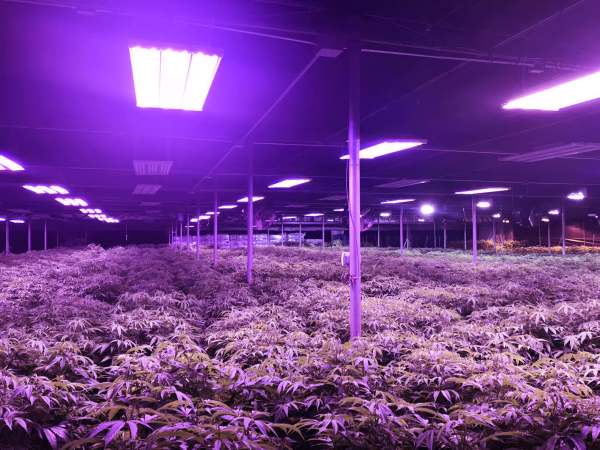
About Spectrum
Among the seven-color light, red light and blue light mainly regulate the photosynthesis of plants, but affect the yield.
This is because when plants are allowed to perceive more red light through "light-harvesting antennas", they will release a hormone that prevents the decomposition of chlorophyll. This allows plants to convert light energy into more chemical energy, and plants can grow stronger. Plants still need red light to bloom and bear fruit normally.
The blue light receptors of plants trigger a hormone response when they perceive higher levels of blue light, thereby slowing down the growth of stems and leaves. Therefore, blue light can help the stems of plants grow thicker.
About light intensity & light cycle
In addition to the composition of the spectrum, the growth of plants still requires appropriate light intensity and photoperiod.
Within a certain range of light intensity, the photosynthetic rate of plants is accelerated with the increase of light intensity, but not blindly to increase light intensity. For each plant or each developmental stage, on the one hand, too high light intensity leads to photoinhibition, which affects yield and quality, on the other hand, it wastes a lot of electric energy and increases the cost of investment.
Design "light recipes" for plants
After fully understanding the needs of different plants and different growth stages of the same plant for light formulas, researchers design "light recipes" and use LED "core light" technology to balance the relationship between yield, quality and energy consumption. , Designed the LED plant supplement light lamp that can not only meet the energy demand of plant photosynthesis and the precise control of its growth and development, and save energy and cost in production at the same time, realize artificial light instead of sunlight and help plant health. Grow.
The LED plant light with suitable light formula not only can ensure the efficient progress of plant photosynthesis, but also the special light formula can regulate the behavior of plants like condiments, making vegetables more delicious and nutritious, and flowers more vivid and fruity. Sweet and more nutritious.
Controllable "sun"
Young leaf vegetables growing under LED plant lights
LED plant lights are powerful, not only energy-saving and high-efficiency, but also long service life. At the same time, the heat output is also very low. It can be closer to plants and is very suitable for indoor farming. Compared with the sun, the biggest advantage of LED plant light is its controllability.
We all know that the sun is the energy source for the growth of everything, but it is not foolproof.
The rotation of the earth will cause the position of the sun to change continuously and the sun will "disappear" in rainy weather, which means that plants cannot always enjoy the sunlight. In addition, sunlight is shared by all things, and there is no preference for any kind of plant, only plants can be adapted to it.
With the emergence of artificial light sources, especially the emergence of LED plant growth lights, everything is different.
Unlike the instability of sunlight, LED plant lights will not change the light intensity with day or night, summer or winter, rainy or sunny days, and it can provide plants with stable and consistent light.
LED plant lights allow growers to "control" the light
In addition, as mentioned above, we can also accurately design and tailor the light formula of plants. For example, if different crops are given different light, tomatoes like purple light should be given more purple light, blueberries prefer red light, so they should be given more red light; for example, if the same crop is different growth stage with different light, plant seedling cells If the splitting speed and photosynthesis are strong, light more blue light to make the seedlings grow stronger. Red light will easily cause the plants to grow thin and weak at this period, so control the amount of red light; in the fruit-bearing period, let the plants take more light. The red light promotes the expansion of the fruit, increases the accumulation of sugar in the fruit, and makes the fruit more delicious.
LED plant lights allow farmers to get the "sunlight" they need anytime and anywhere, and provide them with what they can't have under the sun, that is, "control".


